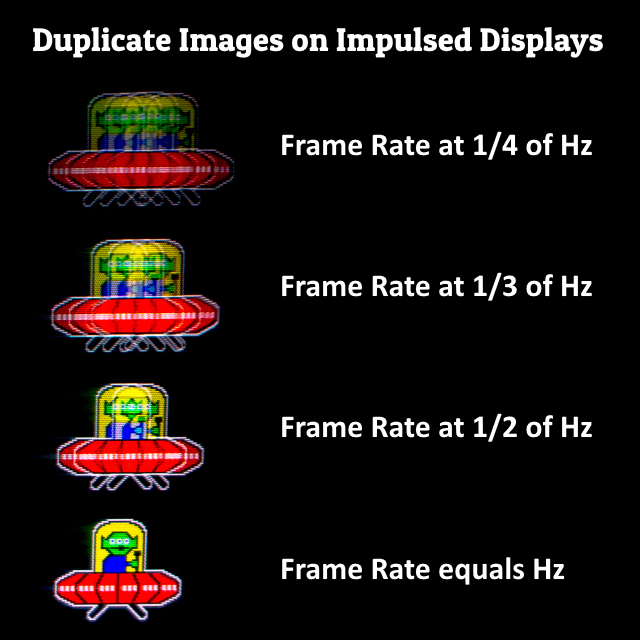CRTs and Strobe crosstalk / Double image
Posted: 15 Aug 2019, 21:11
I've been researching and absorbing everything I can about monitors and all of the different artifacts and technologies and I recently procured two CRTs and am interested in CRTs and how they draw images vs. LCDs. I watched a youtube video of a CRT drawing mario at 380,000 FPS! It was incredible. I never knew that they drew an image basically one pixel at a time like a laser pointer. Very fascinating.
My question is this:
Seeing how modern LCDs can create double images if you strobe the back light and use a refresh rate that is double your actual FPS, say 30 FPS and 60hz, what happens with a CRT?
What I find interesting is that a CRT creates an image so thinly that it's almost like a strobed backlight that also strobes a portion of the screen, sort of like an OLED, except it does it one pixel/pixel line at a time!
If you use a video source at 30 FPS on a 60hz CRT, does it flash the image twice as you track it with your eye, causing a double image? Or do CRTs work differently from LCDs? Do they only draw the image once as needed? Do CRT refresh cycles act like Gsync in a way, sort of like a "maximum refresh rate"?
I am very fascinated by this and I am slowly becoming with monitors and the technology behind it! I can't believe I've been playing PC games obsessively for years and only just know exploring this side of technology, which is arguably the most important part of your PC!
Also, on a side note, if OLEDs can be strobed, why not just draw images one pixel line at a time like a CRT? Clearly this would give the best possible motion blur reduction imagineable, since there's no strobe light to sync with a refresh rate since the pixel ITSELF illuminates?
Sorry for the rambling!
My question is this:
Seeing how modern LCDs can create double images if you strobe the back light and use a refresh rate that is double your actual FPS, say 30 FPS and 60hz, what happens with a CRT?
What I find interesting is that a CRT creates an image so thinly that it's almost like a strobed backlight that also strobes a portion of the screen, sort of like an OLED, except it does it one pixel/pixel line at a time!
If you use a video source at 30 FPS on a 60hz CRT, does it flash the image twice as you track it with your eye, causing a double image? Or do CRTs work differently from LCDs? Do they only draw the image once as needed? Do CRT refresh cycles act like Gsync in a way, sort of like a "maximum refresh rate"?
I am very fascinated by this and I am slowly becoming with monitors and the technology behind it! I can't believe I've been playing PC games obsessively for years and only just know exploring this side of technology, which is arguably the most important part of your PC!
Also, on a side note, if OLEDs can be strobed, why not just draw images one pixel line at a time like a CRT? Clearly this would give the best possible motion blur reduction imagineable, since there's no strobe light to sync with a refresh rate since the pixel ITSELF illuminates?
Sorry for the rambling!
